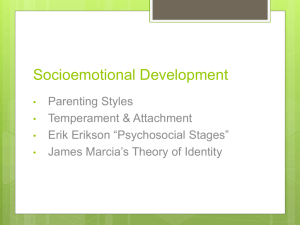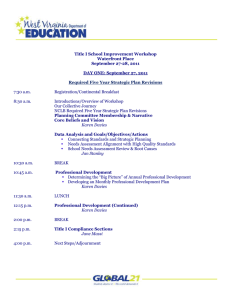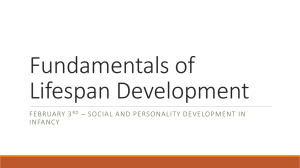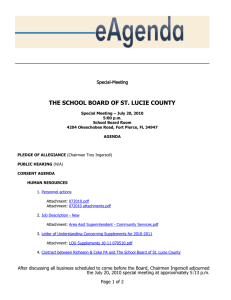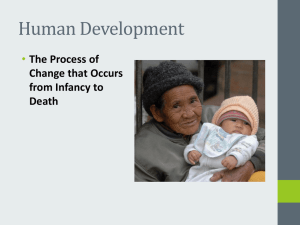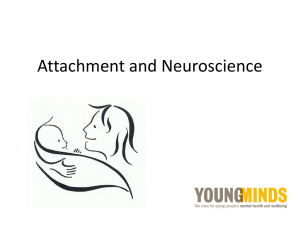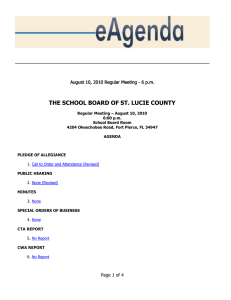HGD Homework (Reading Quiz) Ch 5
advertisement
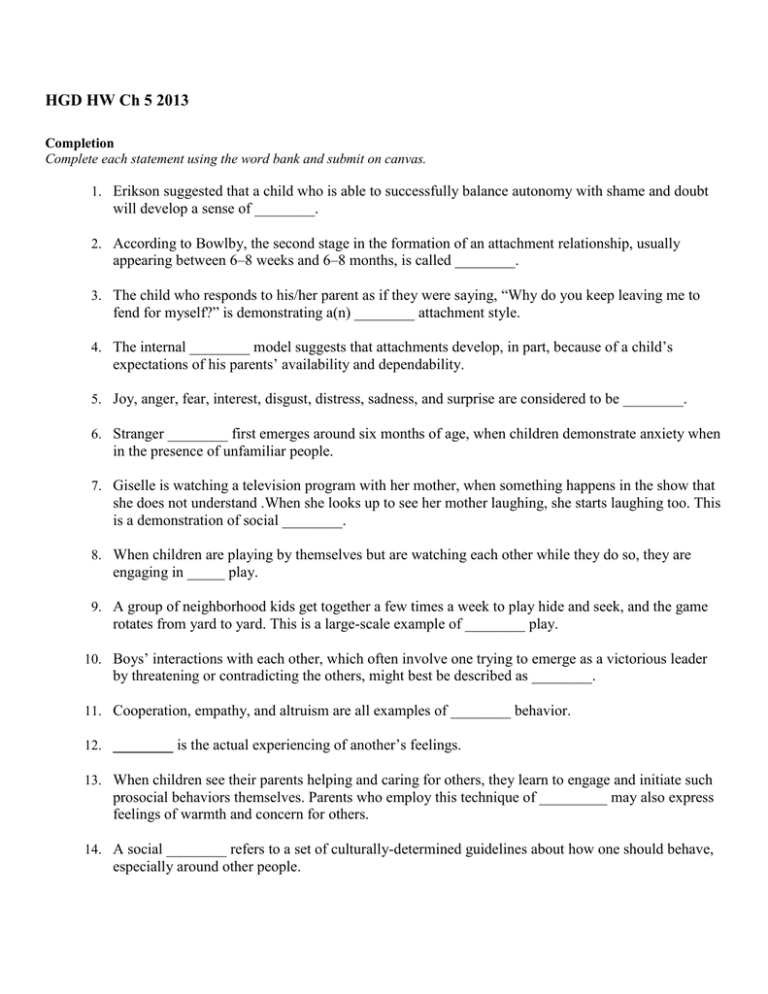
HGD HW Ch 5 2013 Completion Complete each statement using the word bank and submit on canvas. 1. Erikson suggested that a child who is able to successfully balance autonomy with shame and doubt will develop a sense of ________. 2. According to Bowlby, the second stage in the formation of an attachment relationship, usually appearing between 6–8 weeks and 6–8 months, is called ________. 3. The child who responds to his/her parent as if they were saying, “Why do you keep leaving me to fend for myself?” is demonstrating a(n) ________ attachment style. 4. The internal ________ model suggests that attachments develop, in part, because of a child’s expectations of his parents’ availability and dependability. 5. Joy, anger, fear, interest, disgust, distress, sadness, and surprise are considered to be ________. 6. Stranger ________ first emerges around six months of age, when children demonstrate anxiety when in the presence of unfamiliar people. 7. Giselle is watching a television program with her mother, when something happens in the show that she does not understand .When she looks up to see her mother laughing, she starts laughing too. This is a demonstration of social ________. 8. When children are playing by themselves but are watching each other while they do so, they are engaging in _____ play. 9. A group of neighborhood kids get together a few times a week to play hide and seek, and the game rotates from yard to yard. This is a large-scale example of ________ play. 10. Boys’ interactions with each other, which often involve one trying to emerge as a victorious leader by threatening or contradicting the others, might best be described as ________. 11. Cooperation, empathy, and altruism are all examples of ________ behavior. 12. ________ is the actual experiencing of another’s feelings. 13. When children see their parents helping and caring for others, they learn to engage and initiate such prosocial behaviors themselves. Parents who employ this technique of _________ may also express feelings of warmth and concern for others. 14. A social ________ refers to a set of culturally-determined guidelines about how one should behave, especially around other people. 15. “Girls should play with dolls,” and “boys should roughhouse with each other” are both examples of ________. 16. An attempt to hurt another by damaging his or her peer relationships is referred to as _____ aggression. 17. An individual’s sense of themselves as male or female is their ________. 18. Gender ________ is part of the process of acquiring our gender identity. It refers to the fact that children come to understand that boys become men and girls become women. 19. In gender-________ theory, children are believed to learn more about an activity only after first deciding whether it is masculine or feminine. 20. Research has found that a(n) ________ mother-child attachment is just as likely to occur, regardless of the quality, duration, and frequency of childcare. The age at which a child enters child care is similarly unlikely to interfere with such an attachment. Word Bank attachment in the making avoidant basic emotions constricting cooperative Empathy gender identity gender stereotypes will modeling parallel prosocial referencing relational role schema secure stability wariness working





